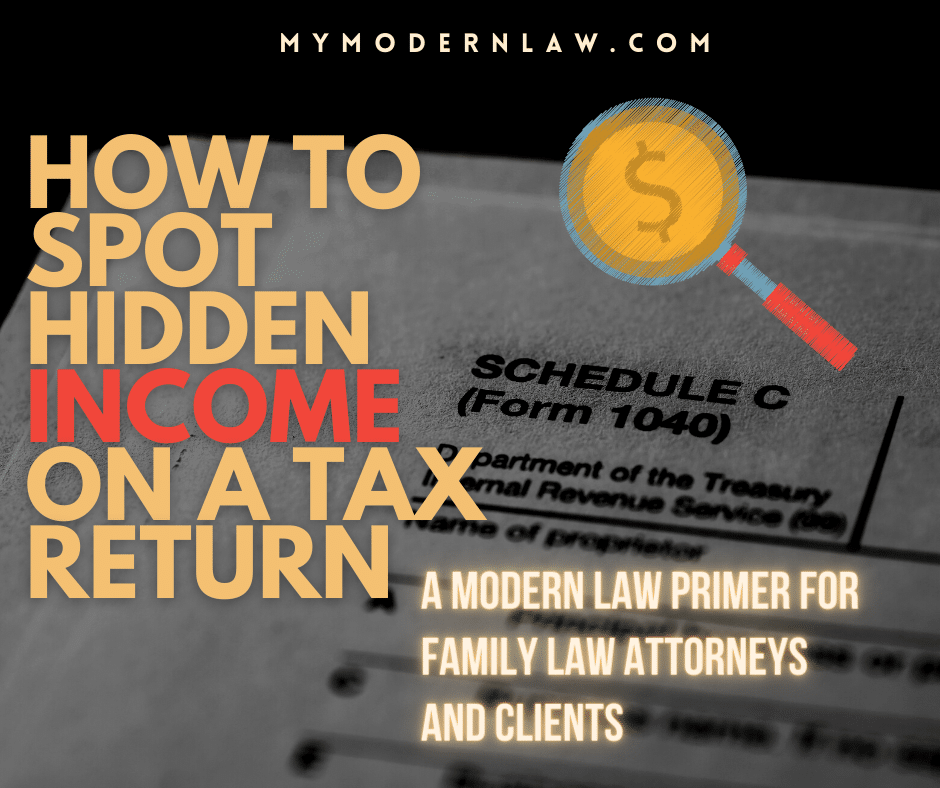Deciphering a tax return is a critical skill for family law attorneys and clients, especially when calculating income for child support and spousal maintenance. A thorough understanding can prevent income manipulation and ensure fair financial outcomes. At a recent Modern Law “Lunch and Learn” for family law attorneys on the subject, the following key points will help both attorneys and their clients when interpreting tax documents.
Understanding Business Profit vs. Distributions
When determining income, it’s vital to distinguish between business profit and distributions. For income calculations, the entire profit should be considered, regardless of the distributions taken. This approach prevents understatement of income, as taxes are paid on the full profit, reflecting the true economic benefit to the individual.
Schedule C Analysis
For self-employed clients, Schedule C attached to their 1040 tax return reports the business’s profit or loss. It’s essential to go beyond gross receipts, incorporating ordinary and necessary expenses, as well as the cost of goods sold. Scrutinizing each line item can reveal inflated expenses. Courts may allow for adjustment, adding back personal expenses claimed as business deductions.
Case Law and Depreciation
Case law, such as Baker v. Baker, supports the addition of excess depreciation back into income calculations. Depreciation should be spread over the asset’s useful life as determined by IRS guidelines, not accelerated to reduce taxable income artificially.
Strategic Considerations
Representing a business owner requires a strategic approach to categorize expenses. Conversely, when representing the non-business owner, identifying personal perks disguised as business expenses is crucial. Expert testimony can be invaluable in making precise determinations.
K-1 Forms and Income Reporting
Income from entities like S-Corps or LLCs is reported on K-1 forms. It’s the profits listed on the K-1, not the distributions, that count toward the income for support calculations. This ensures that the income assessed for support obligations reflects the true profits attributable to the individual.
Schedule E and Rental Income
Schedule E reports rental income, expenses, and depreciation. Attorneys must examine whether the entire property’s expenses are claimed when only a portion generates rental income. may be necessary to reflect the true net income from the rental activity.
In summary, analyzing tax returns for income calculation in family law requires meticulous attention to detail and an understanding of both tax law and legal precedents. By focusing on profits over distributions and making necessary adjustments for personal expenses, family law practitioners and their clients can present a more accurate income analysis to the court.






